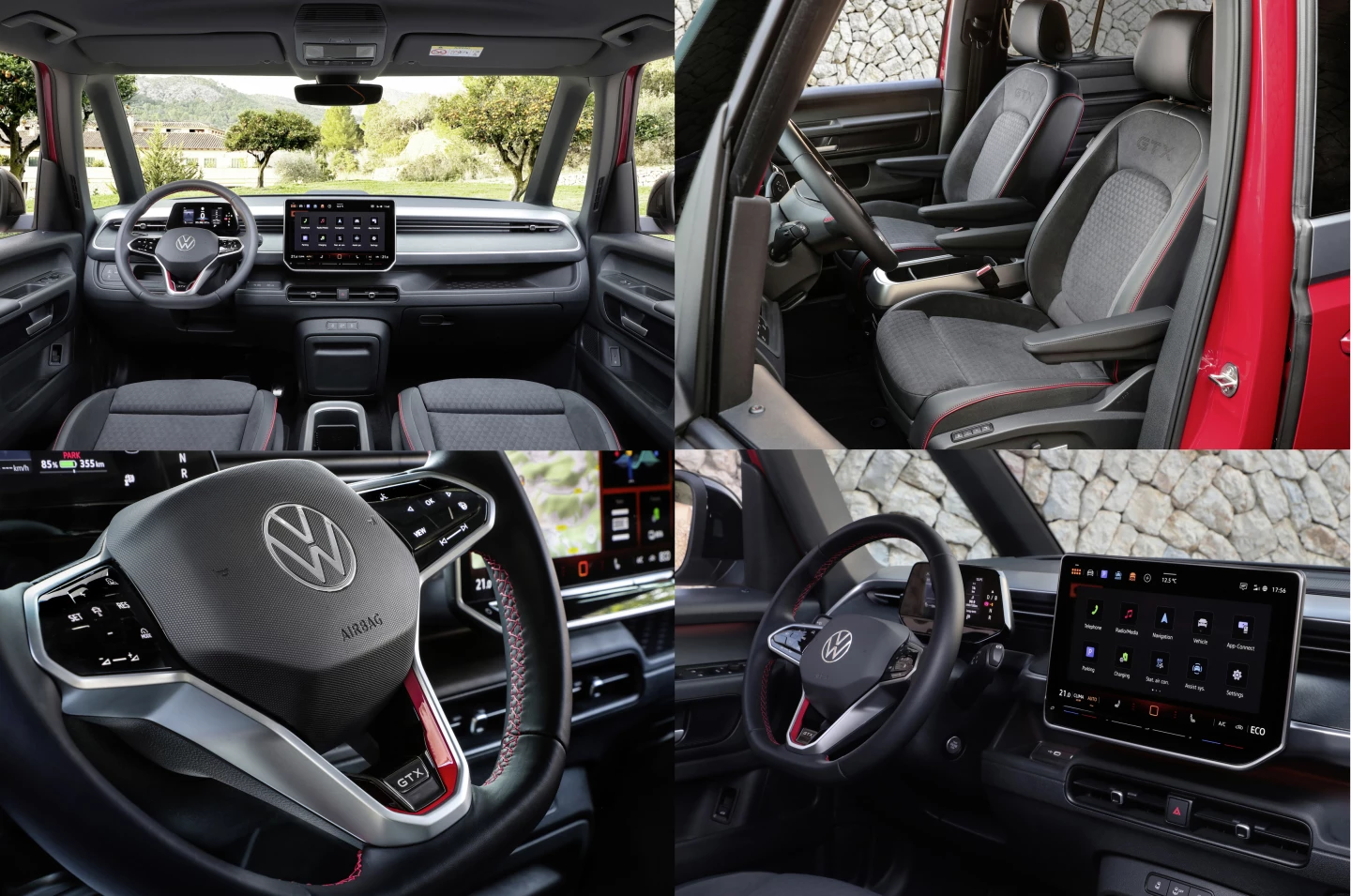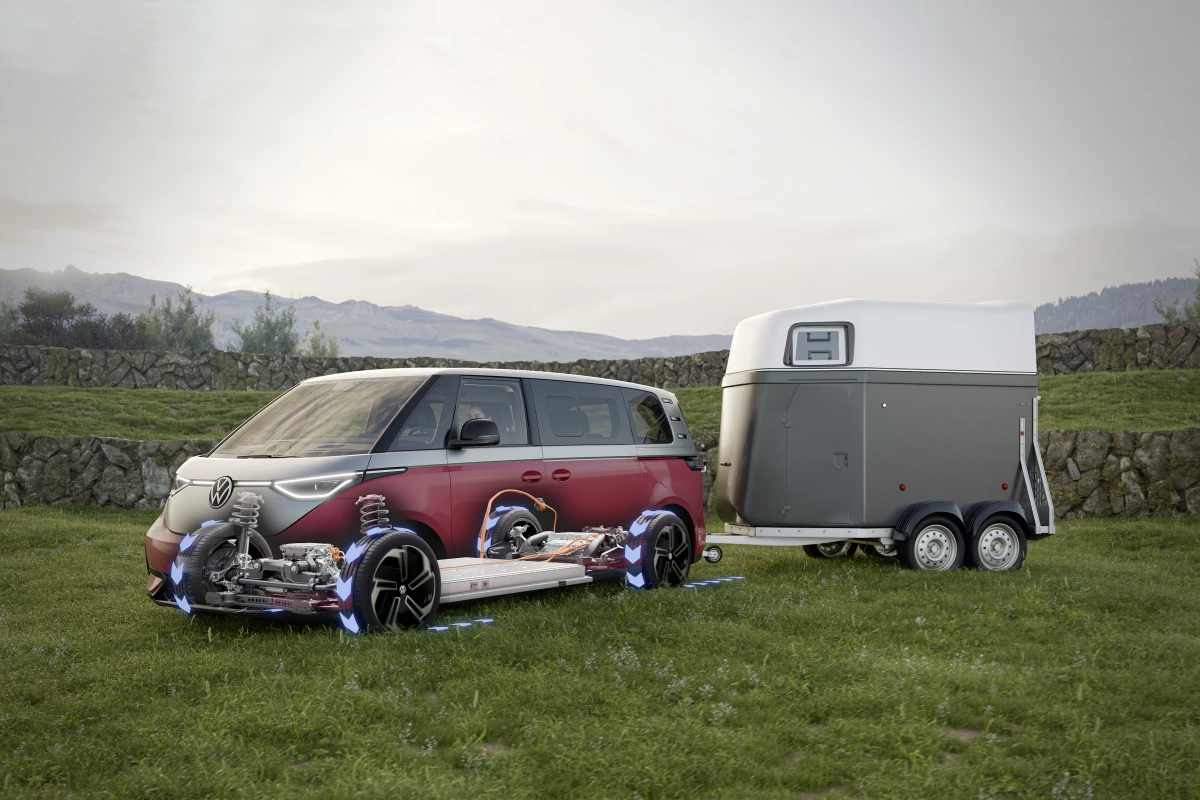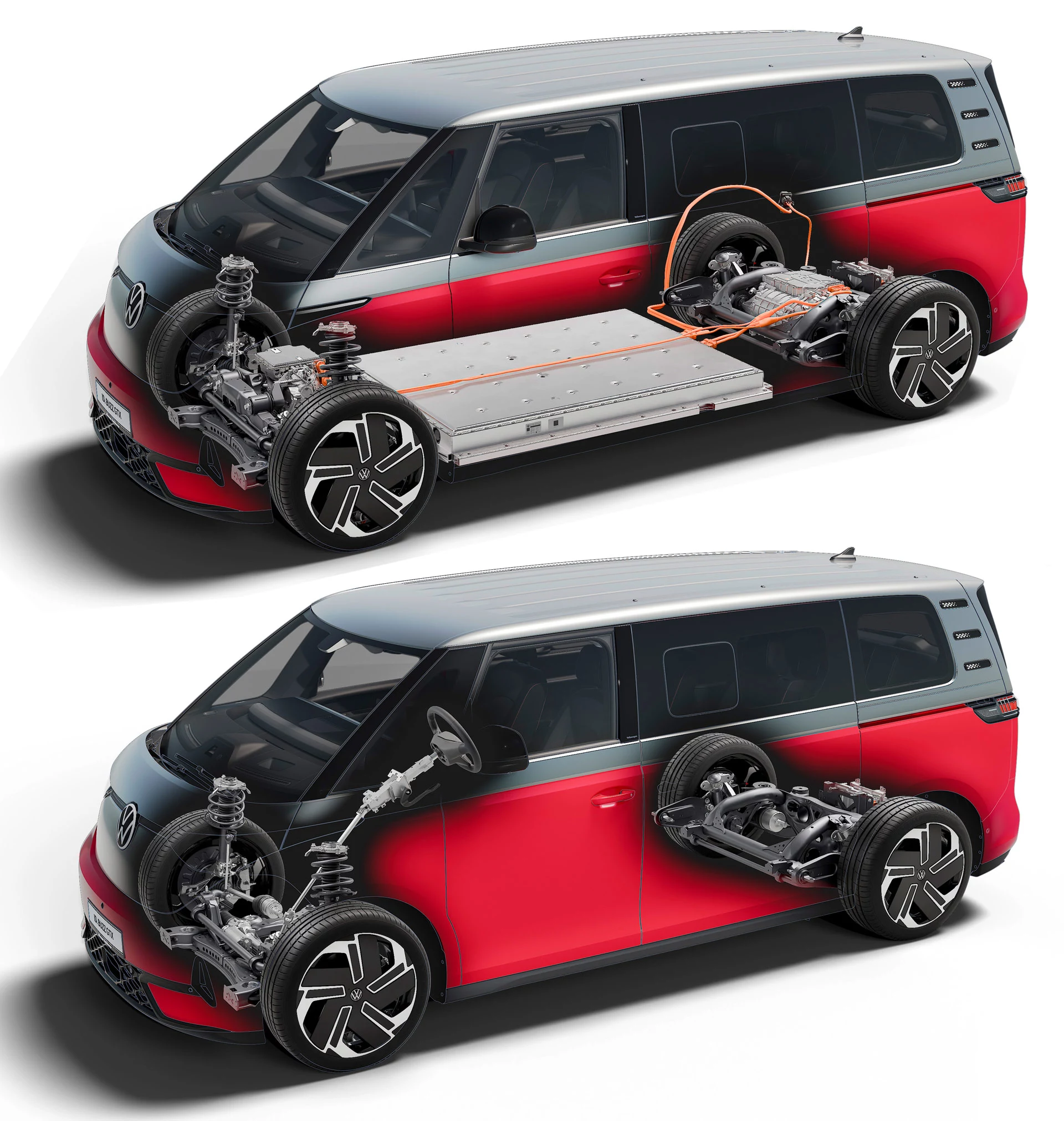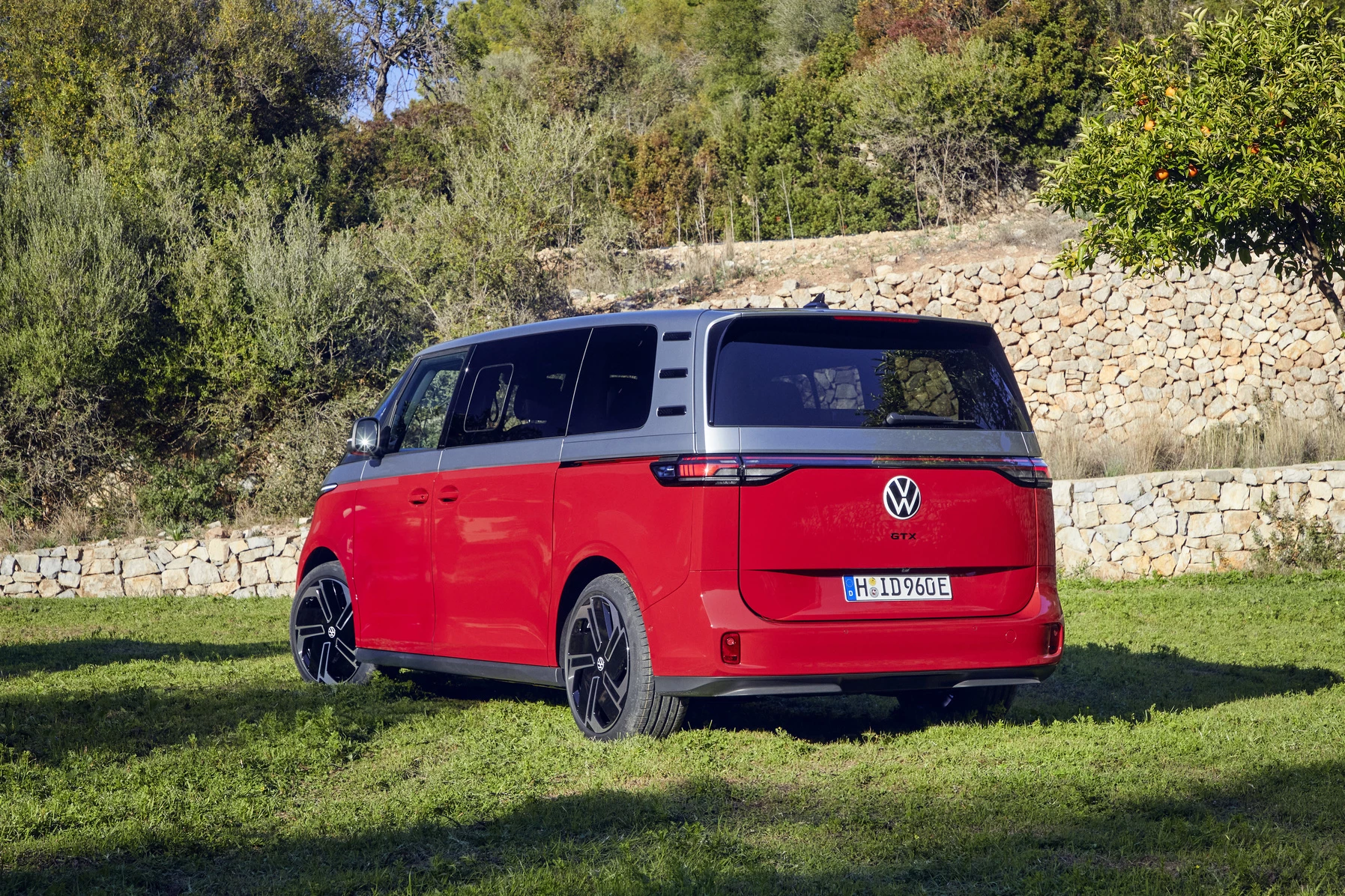History has many important vehicles, but few with the credentials of the Volkswagen Microbus. It was born in 1950 as an even more practical derivation of the world's most prolific automobile, the VW Beetle. The Beetle sold 23,000,000 units between 1938 and 2008, and when the first split-screen transporters rolled off the line in 1950, they used the Beetle's anemic 69 cubic inch (1,131 cc) engine.
The first splitties used a 24 hp (18 kW) version of the iconic VW flat-four, air-cooled engine and when the first year of production ended, 9,541 had been produced.
It was a slow and inauspicious start to a commercial vehicle that would evolve into every possible permutation, from a mobile cocktail bar to a mobile bedroom. Sales picked up so much that it sold for so long and in such vast quantities that it would eventually mimic the feat of its high-achieving sibling and become the most successful commercial vehicle in history.
In the 74 years since then, 13 million examples of the microbus have been built, perhaps familiar by their localized name of Bulli/Bully (a portmanteau of Bus and Lieferwagen, which is German for “delivery van”), Hippie-van, Samba, Kombi, Transporter, California or its original species identifier, the Type 2. The Beetle was the Type 1.
The Type 2 was adopted by a variety of tribal groups across the globe, most notably by distributors of commercial goods in urban settings. It became the official vehicle of the world’s surf bums for several decades, and is one of the main reasons Germany has 8,000 camping grounds. The T2 has also probably carried a significant amount of the food you have eaten across a lifetime, and it’s not an entirely outside chance that you may have been conceived in one.

The Beetle and the Microbus between them are responsible for one of the world’s largest companies, and they were built as humble reliable workhorses for the masses. The keystone was the horizontally-opposed air-cooled motor that was beautifully-balanced, no-maintenance-required, economical and reliable. The engine was so successful that many kit car manufacturers built cars just to house it, using the motive jewel for everything from lightweight sports cars to dune buggies to ultralight aircraft.
Well times change and the humility is gone with the new GTX variant of the Volkswagen microbus, because a few generations later, that humble hard working family has spawned an imposing automotive athlete with a 335-horsepower, twin-motor, always-on, four-wheel-drive electric powertrain that will serve as a voluminous box-like blank canvas for modders to create whatever they want.
Unlike cars and vans that use snarling high-performance petrol engines, the ID. Buzz GTX will also happily perform all the same mundane tasks its forebears did, from transporting the kids to school, to delivering the bread … in silence.
The ID. Buzz GTX is electric, so it retains all the original Volkswagen qualities of doing your bidding reliably and without fuss, but it will also do it without noise and exhaust emissions, and it will be as docile to drive as you wish.
When you need to go somewhere distant quickly though, and have too much stuff to take on a plane, the ID. Buzz GTX would seemingly have the perfect set of specifications.

That vast cargo bay has infinite possibilities and this must surely be the fastest way to get that much stuff from point A to Point B when point A and B are a long way apart, but on the same continent. Refueling aside, it's near perfect for small teams to bond in, and the advantage of taking your stuff somewhere else in one of these, is that when you have unpacked it, it gives you emission-free local transportation with complete geographic freedom regardless of what zone your destination might be in.
It can be reconfigured to accept almost any cargo, from tribal groups of less than seven, through the individual requirements of most sports to being a tailor-made staff car for trans-continental drug traffickers. Just as Volkswagen advertised in 1950, it will get the job done reliably ... except now it will be much faster than before, as required.

In reality, you’re unlikely to ever unleash all 335 of those horses, but if you live in an environment of tyrannical distances and high speed road networks (Germany was the first), and wish to have those attributes in your shopping trolley work-a-day vehicle, you will have that car very soon.
The hero in this story is actually the powertrain. Volkswagen’s development of this stonking 335-hp dual-motor, all-wheel-drive electric powertrain means it is now possible to have an ultra-high-performance van with go-kart handling, and the ID. Buzz GTX is just one of the vehicles that will be built using this next-generation motive power plant.

Just last week the same AWD two-motor powertrain was announced in the ID.7 GTX Tourer, a slinky station wagon even closer to the shooting brake concept than the ID. Buzz GTX. The ID.3 GTX hot hatch was also announced, but it got just the rear wheel part of the drivetrain architecture, though it still delivers 322 horsepower and 402 pound-feet of torque through those wheels, maybe showing that the ID. Buzz GTX has so much potential for lots more horsepower, that the modders and hackers will descend upon it with well-founded malicious intent.
Volkswagen already has GTX versions of the ID.4 crossover and ID.5 coupe SUV on the road in Europe, both of which use the same dual-motor powertrain found in all-wheel-drive ID.4s sold in America.
With performance capable of fulfilling both the most mundane and the most ridiculous needs, the configuration has already formed the basis for the coming electric generation of Volkswagen vehicles - just as the humble air-cooled boxer engine did at the outset of the company.
So this motor architecture is a key building block in the future of all Volkswagen vehicles, and in this van form, it will be available with two wheelbases, two battery capacities and in 5-, 6- or 7-seat configurations.

Most people never bothered to have Volkswagen’s 4MOTION all-wheel drive fitted to their cars because it has been costly. Every time I have driven a 4MOTION AWD Volkswagen, it has handled, steered and driven so well that I felt much safer. Public roads offer many challenges from potholes to tram tracks to loose and variably slippery surfaces, and making all four wheels active makes sense on almost any level.
Four wheels offer more traction than two wheels in every driving situation, and having the pulling power on all four wheels measuring traction and distributing it to achieve the desired maneuver is the goal. There’s a lot of software development been done to develop the optimum power delivery for four wheels since development of the 4MOTION system began three decades ago, and those skill sets are going to be an advantage in differentiating Volkswagen from other EV manufacturers going forward.
The GTX range will display the hero models using this advanced system and always-on computer-controlled AWD is likely to become a standard safety feature on all electric cars one day.
Considering the existential threat levels experienced daily in your vehicle (seriously, where else are you gonna get killed?), the investment in such a system will make it safer to get the kids to school for starters … and the 4MOTION system on an electric vehicle will be better than the internal combustion engine version.
So this is a landmark vehicle because despite sharing only a name with its distant feted ancestor, it embodies all the brand attributes that made that vehicle legendary (most notably the ability to reliably transport a ton of assorted stuff/people), plus it has the performance that VW Microbus owners have always dreamed about.
For many years in my youth, I owned and loved a splittie with a tray back. I lived 200 miles from my parents and when it didn’t go there on the weekends with lots of stuff, it carried a racing motorcycle to a distant racetrack, with even more stuff.
The motor wasn’t very strong, and the beastie never reached double nickel (55 mph) downhill with a tailwind. Its speed would sometimes drop to pedestrian pace going up the same hill with a big load.
It got me there and back every time though, and I loved it dearly because of that.
I spent thousands of hours driving that splittie at very mundane speeds, dreaming about a truck of the future … just like this.
I’m betting I am not the only one who did that.
It’s here!
Source: Volkswagen












